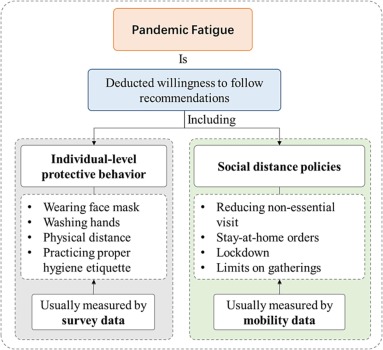
**Comprehending the Effects of ‘Behavioral Fatigue’ on Pandemic Reaction and Adherence**
In current discussions, particularly emphasized by an article in *The Guardian*, ‘behavioral fatigue’ has surfaced as a debated issue. The UK Government notably cited it as a justification for postponing strict public health measures during the COVID-19 pandemic, indicating that individuals might grow weary of social distancing. This notion has faced scrutiny not only from media analysts but also from extensive scientific research concerning public adherence during epidemics.
Although ‘behavioral fatigue’ is not a term regularly encountered in medical literature, there exists a significant amount of research that investigates the variations in adherence to public health guidelines over time. Research frequently examines how perceptions of risk influence actions, and it is evident that perception does not always correspond with the actual risk. Typically, as perceived risk diminishes, adherence to preventive measures tends to wane.
**Scientific Research on Adherence Through Epidemics**
A plethora of studies analyzing various international epidemics offers insights into this phenomenon:
1. **H1N1 Flu Pandemic (2009):** A range of studies from Italy, Hong Kong, and Malaysia indicated a decrease in adherence to specific preventive measures as the epidemic unfolded. Conversely, in the Netherlands, information from the bird flu outbreak in 2006 displayed variable adherence, showcasing phases of heightened precautions followed by easing.
2. **Objective Behavioral Data:** During the 2009 H1N1 outbreak in Mexico, television viewing as an indicator of social distancing reflected increased initial adherence that declined as the epidemic escalated. Likewise, research on missed flight reservations uncovered substantial initial behavioral shifts that later reverted to normal.
3. **Mathematical Models and Qualitative Research:** These have indicated that decreasing adherence could influence epidemic cycles. Interviews conducted during pandemics reveal the tension between public health directives and individual needs such as familial responsibilities and economic pressures.
4. **Examples of Consistent Adherence:** Certain studies illustrate that adherence did not diminish. Research in the Netherlands and another in Beijing during significant outbreaks demonstrated consistent or increased commitment to preventive actions.
**The Consequences of ‘Behavioral Fatigue’**
The amassed evidence highlights the necessity of understanding and anticipating human behavior during pandemics. While some reduction in commitment to public health measures is observed, it is not ubiquitous. Specific communities have shown strong and enduring adherence, indicating that behavioral resilience is attainable.
**Essential Takeaways and Future Considerations**
Firstly, scientists and public figures should approach public communication with care, especially in times of crisis, to avoid providing misleading information. Secondly, the role of the public is vital. People possess the capacity to uphold protective behaviors despite the normalization of risk perception, actively aiding in the control of disease spread.
In summary, a thorough understanding and strategic communication regarding adherence behaviors can enhance pandemic response strategies. This can build public trust and engagement, ultimately protecting public health now and in future emergencies.